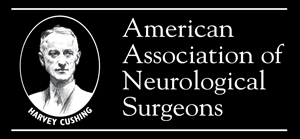The authors present the case of a 26-year-old man with a 10–15-year history of worsening bilateral dystonia and baseline chorea occurring up to 20 times per day that was exacerbated by stress and anxiety and was refractory to medical management. Paroxysmal nonkinesigenic dyskinesia was diagnosed, which is a rare, hyperkinetic movement disorder that is episodic and does not respond to nonbenzodiazepine antiepileptics. The patient was significantly debilitated by his disease, lived in a group home, and suffered from frequent falls, necessitating the wearing of a protective helmet and face mask at all times.
The patient underwent implantation of bilateral deep brain stimulation quadripolar electrodes in the globus pallidus internus with the aid of image-guided stereotactic neurosurgery and microelectrode recording without complication.
At his 1-month postoperative follow-up, the patient reported a subjective 90% improvement in his symptoms; the only notable side effect was a slight increased slurring in his baseline dysarthria. Objective reporting and recording forms maintained by the patient's caretakers over the following 18 months suggested a significant and sustained improvement in his overall balance, ambulation, and gross motor function with a substantial decrease in the incidence of reported falls.
The authors conclude that pallidal deep brain stimulation may be successfully applied to patients suffering from refractory paroxysmal nonkinesigenic dyskinesia with promising results. This treatment strategy deserves further prospective investigation, clinical consideration, and refinement.


